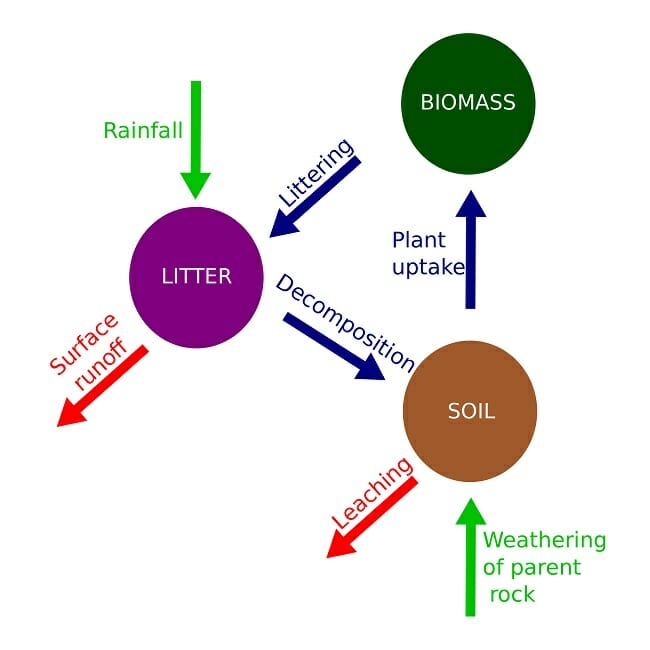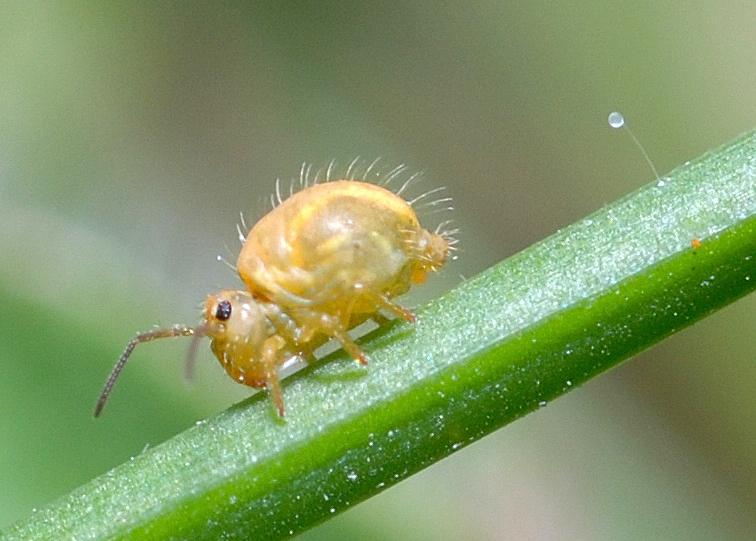Detritivore
Detritivore Definition:
The detritivore is heterotrophic organisms, which gain their nutrition by eating the Detritus. The detritus is an organic matter composed of dead plants and animal’s material. Detritivores can also gain their nutrition by Coprophagy, which is a feeding strategy including feces consumption.
Detritivore is usually invertebrate insects like beetles, mites, and flies; mollusks like snails and slugs; or soil-dwelling earthworms and woodlice. The Detritivores and Decomposers have distinct meanings, although detritivore is technically the branch of decomposers. Unlike detritivores, the true decomposers like bacteria, fungi or protists, use Saprotrophic feeding by which they absorb nutrients through Extracellular Digestion. Feeding strategies of both Detritivores and Scavengers include the consumption of matter of dead plants and dead animals, scavengers tend to feed on a large scale rather than detritivores.
The functions of Detritivore:
Detritivore and decomposer both breakdown all of the material of dead and decay bodies in any ecosystem. They play an important role in the nutrient cycle and essential for biogeochemical cycles, like the carbon cycles, phosphorus cycles, and nitrogen cycles. Detritivores feed on the primary producer material as carnivores and herbivores. Detritivores are usually eaten by secondary consumers for consuming energy. They are an integral component of the energy cycle of the ecosystem. The recycling process is not only an important part of decomposition but also important to stop the spread of disease by the removal of dead materials. Detritivores live within the soil, e.g. aerate, earthworms, and mixing the soil with their movement. This is important for plant growth.

Examples of Detritivores:
Detritivores examples are given below:

-
Worms:
The worm is the important soil-dwelling detritivores. They consume a large amount of organic material and soil and lies throughout all layers of their substrate.
The epigeic worm lives on the surface, and Endogeic worm lives in the upper layer of soil. These two kinds of worms refer to feed on dead grass, fallen leaves and bioorganic materials like algae, fungi, and the other microorganisms, which also feed on these substances.
Anecic worm lives with in-depth soil, primarily consisting of raw soil, as they consist of many fungi, algae, and bacteria.
Worms eat food by their mouths and suck it into their digestive system by using a muscular action. Material pass through their digestive system into their “gizzard”, it uses to digestive enzymes and grinding action in the result of grit presence and sand from the soil.

-
Springtails:
The springtails are wingless Arthropods lives primarily as Detritivores. They usually found in leaf litter and other habitats where decaying matters present, like grass, moss, and deadwood. Most of the springtails feed on fungal mycelium, lichens, vegetation, pollen, and algae. Some springtails may also found to feed on decaying animal material like earthworms and flies.
They have a rapid reproduction rate and variable habitat and diet range. They also colonize in large numbers and are one of the numerous macroscopic animals.
Benefits of Springtails:
The springtails have great effect on the rate of detritus decomposition. The removal of springtails causes reduces the rate of leaf litter decomposition.
Springtails are also important for controlling fungal disease because they consume spores and mycelium, they can remove the pathogens.
Springtails can also be helpful for testing the Toxicology of the soil. They are much sensitive to pollutants and they may use as bio-indicators of quality of the soil.
The Decomposition Cycle:
Detritus is composed of Particulate Organic Material (POM) which is made up of tissues deposited with dead plants and animals or when they shed skin, or antlers by molting, like microorganisms and fecal matter. Detritus of the colonies of microorganisms add its nutrient value. Detritus also may be lies as Humus, which is the dead materials mixed with the soil, or as leaf litter. In the aquatic environment, the detritus is referring as ‘marine snow’, usually falls on the seabed.
All of these animals have energy and nutrients, which presents in the waste material and bodies of these deceased. In the early stages of decomposition, detritivores feed on large particular material and doing so as the material divided into pieces of smaller size. The attack of bacteria and other microorganisms, the process of division increase that speed up the decomposition process. Detritivores also break down some carbohydrates, lipids, and proteins that lie in the detritus by digestion. This leach produces the water-soluble nutrients into the soil and increases the soil mineral contacts. At this time, the detritivores extract nutrition for their own life cycle. The process continues, and decomposers (also called Saprophytes), perform true composition by using chemical compounds and digestive enzymes.
The successive decomposition of the organic matter, in results the Humification (the formation of humus) lies soil type with the high mineral content and stability.




